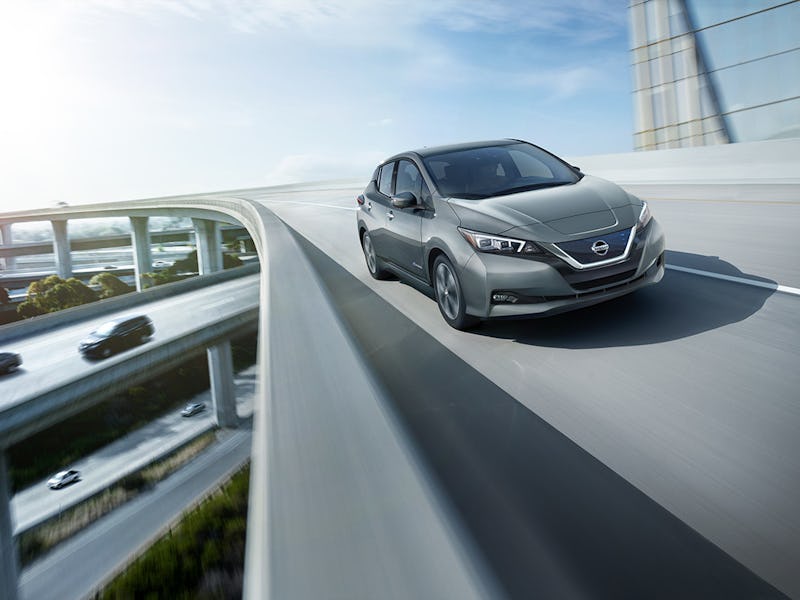Nissan took the wraps off its next-generation Leaf on Tuesday, and it looks set to give the Tesla Model 3 a run for its money. The two firms are competing for the emerging low-end electric vehicle market. While the Model 3 has already started shipments of selected models, the new Leaf is expected to start deliveries around April next year.
The Leaf is the undisputed champion of the budget range so far, with the first model hitting the roads back in 2010 and moving on to become a top-selling electric vehicle. But Tesla’s attention to detail and future-facing technologies mean it could attract buyers seeking to make an investment that sees them through the next few years of advancements.
As consumers look to make the jump away from the internal combustion engine, here’s how the two compare on the key issues:
Range
Nissan boasts an EPA-tested range of 150 miles from its 40 kilowatt-hour (kWh) battery. The Model 3, on the other hand, offers 220 miles on the 50 kWh edition or 310 miles on the long range version.
Tesla Model 3.
Charging times are slightly murkier. Nissan boasts 22 miles of range from one hour of charging at a home-based fast charger, or 88 miles of range from 30 minutes for charging from a 50 kW “fastest charger.” These options are only available on the premium tiers, though, meaning the base model will have to stick to standard charge times.
The Model 3, on the other hand, supports Tesla’s global network of superchargers. These can charge a car to 80 percent capacity in around half an hour.
Autonomy
The Leaf is the first Nissan to offer ProPilot Assist, a semi-autonomous driving mode that will keep the car centered and driving along its lane on a highway, coming to a complete stop based on how the traffic flows.
Tesla, on the other hand, offers a semi-autonomous system called Tesla Autopilot. This offers a number of advantages over the Nissan system, like summoning to and from the garage and automatically exit the highway when the destination junction approaches. The most recent iteration of Autopilot started shipping in every one of the company’s cars since October last year, and Tesla promises that a future upgrade will enable fully autonomous driving using the same sensors present in the car today.
Dashboard
Nissan’s navigation system offers support for Android Auto and Apple CarPlay smartphone connectivity systems, shown over a seven-inch touchscreen. It has Bluetooth and USB connections, as well as a host of buttons and dials alongside the standard instrument cluster:
The new Leaf dashboard.
The Model 3 is a far more…stripped down affair:
The Model 3 dashboard.
There’s a single 15-inch touchscreen in the center of the dashboard. No instrument cluster behind the wheel, no unnecessary dials…the speed and current gear show up on the center panel. It’s a lot more screen real estate than the Leaf, and the minimalist design is a decisive break from the past, but it may not appeal to those used to a more traditional setup.
Price
The Nissan Leaf starts from a competitive price point. The base model starts at $29,990 before incentives. The $32,490 “SV” model adds alloy wheels, the semi-autonomous features, quick charge port and the navigation system. The $36,200 “SL” model adds blind spot warnings, leather seats, premium audio, a view monitor and a portable charge cable. While most color changes are free, a couple of premium colors cost as much as $649.
Tesla structures its pricing slightly differently. There’s the $35,000 base model and the $44,000 long range model. Beyond these two choices, Tesla offers the Autopilot software upgrade for $5,000, and buyers can put the money down for the future full autonomy upgrade at $3,000 on top of that. A $5,500 premium package includes glass roof, premium audio and in-car seat upgrades. Tesla also charges $1,000 more for any color choice other than black.
On paper, it seems the Model 3 is the technology powerhouse. But that tech comes at a price, and Nissan’s high-end Leaf barely costs more than the lowest-price Model 3. Buyers that can stomach the lower range may opt for the Leaf to save a bit of money.
